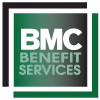Per Rasmussen Reports, an electronic publishing firm specializing in the collection, publication, and distribution of public opinion polling information Rasmussenreports.com
While health care costs are rising rapidly, 64% of American adults say that quality care is more important than lower health care costs (25%). That sentiment is echoed across all demographics in the latest Rasmussen Reports survey.
The survey also found that Americans underestimate how much it costs companies to provide insurance for an employee and their family. Half (50%) of all Americans estimate the cost at $750 per month or less. Thirteen percent (13%) are in the right ballpark and estimate an average monthly insurance cost of $750 to $1,000. Only 10% overestimate the cost and assume that insurance premiums for a family would top $1,000 per month.
According to the 2006 Kaiser Family Foundation/Health Research and Educational Trust Employer Health Benefits Survey, the average cost of family health insurance coverage is $957 per month or $11,480 per year.
In addition to underestimating the cost of insurance, most Americans report fairly low out of pocket expenses for health care costs. A plurality of respondents (30%) say their out-of-pocket expenses for health insurance and other costs is less than $100 per month. A mere handful (5%) pays more than $500 a month for such expenses.
A recent survey found that nearly half of all Americans believe that Wal-mart has enough clout to reduce health care costs with programs like its recent $4 pricing plan for selected generic drugs.
Eighty percent (80%) of the Rasmussen Reports survey respondents report having health insurance. Eighteen percent (18%) say they do not. The most recent U.S. Census Bureau data (2005) revealed that 15.9% of the U.S. population was without health insurance.
Married individuals are more likely to be insured than singles (84% versus 73%). Also, the percentage of those with insurance increases with both age and income levels. Sixty-one percent (61%) of individuals ages 18-29 are insured versus 89% of those 65 and older. Slightly more than half of individuals with incomes less than $20,000 per year are insured (54%) compared to 91% of those with incomes above $100,000 annually.
Older and upper income Americans are also more likely to get a flu shot this season.
Thirty-five percent (35%) of Americans favor a single-payer health insurance program overseen by the federal government. Forty-one percent (41%) oppose such a plan. Democrats are more supportive of the concept than Republicans (41% versus 29%).
